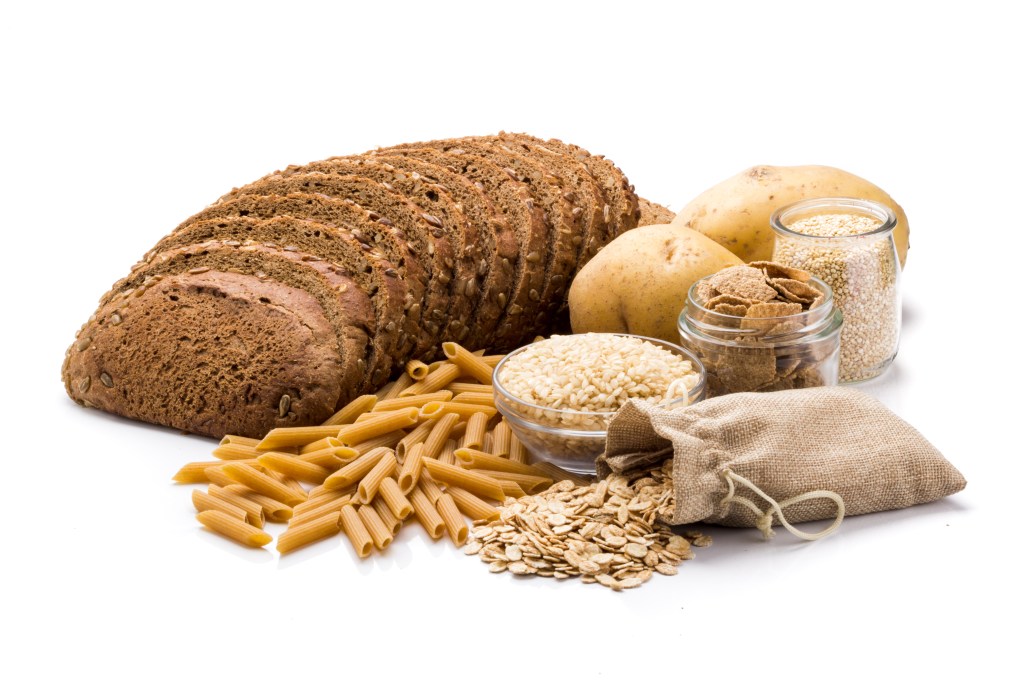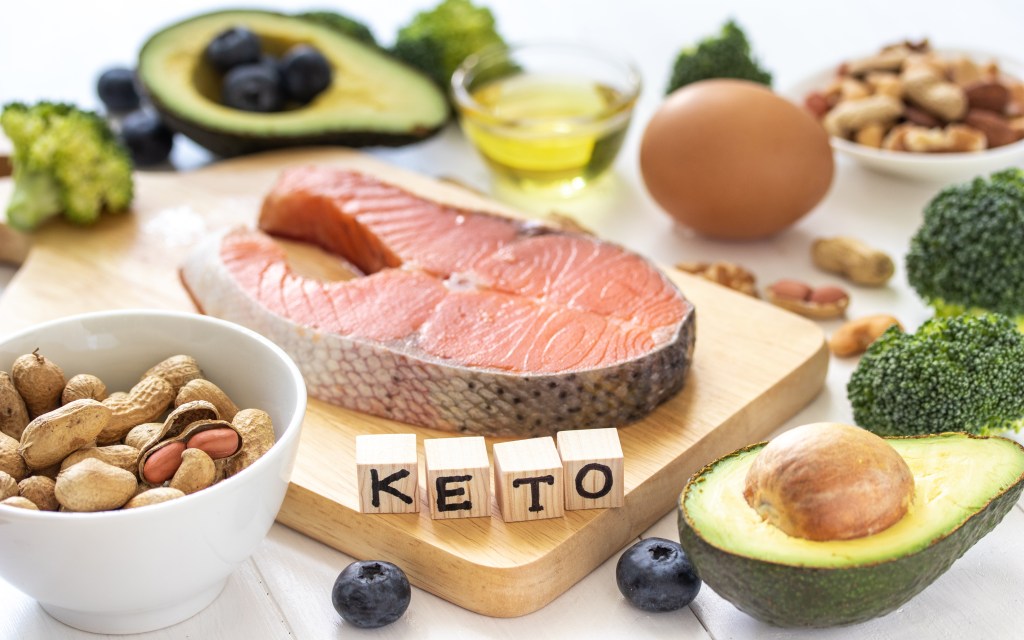At a glance
Ketosis occurs when the body burns fat for fuel instead of glucose, producing ketones for energy. It can be achieved through fasting or a strict low-carb, high-fat ketogenic diet. However, factors such as eating too many carbs or protein, chronic stress, excessive caffeine, and artificial sweeteners can raise insulin levels and kick you out of ketosis.
Understanding what kicks you out of ketosis is important to maintain fat-burning and maximize the health benefits of a keto lifestyle.
There are several factors that can inhibit ketosis and derail your keto diet, including excessive carb intake, too much protein, chronic stress, and even certain artificial sweeteners.
Learn how to tell if you’re in ketosis and discover how to prevent getting kicked out of fat-burning mode.
What is ketosis?
Glucose, which is derived from dietary carbohydrates and sugars, is the body’s primary fuel source. However, when glucose is limited, the liver starts to burn fat to generate energy.
The breakdown of fats generates ketones, a group of organic acids that function as an alternative fuel source. When ketones are released into the bloodstream and begin to fuel cells, the body enters a metabolic state known as ketosis.
Ketosis can be achieved by fasting or by following a ketogenic diet, which reduces carbohydrate intake to between 20 and 50 grams of net carbs daily to limit glucose.
To maintain ketosis, it’s essential to keep carbohydrate intake consistently low and obtain the majority of daily caloric requirements from healthy fats.
Watch the video below to learn about common keto mistakes that can kick you out of ketosis.
How to tell if you’re in ketosis
Following a strict, low-carb diet can help you achieve ketosis within a few days. However, it can take several weeks to become fully fat-adapted and adjusted to using ketones as the body’s primary fuel source.
Here are five ways to tell if you’re in ketosis.
1. Ketone tests
Ketone tests, which evaluate ketone levels in the urine, breath, or blood, are reliable methods to determine if you’re in ketosis.
Urine ketone strips and breath ketone analyzers can be purchased over-the-counter (OTC) to measure ketone levels conveniently at home. However, OTC blood ketone meters, which use lancets and blood test strips, are considered the most accurate.
2. Weight loss and satiety
Weight loss, especially within the first two weeks of starting a keto diet, is a strong indicator of ketosis. Shedding pounds is a sign that your body is depleting glycogen reserves, a storage form of glucose.
Glycogen requires water molecules to be stored in the liver and muscle tissues, and glycogen depletion during the early stages of ketosis can lead to significant water weight loss.
Research published in StatPearls found that “Individuals on a ketogenic diet typically experience rapid weight loss, often up to 10 pounds in 2 weeks or less. This initial weight loss is attributed to the diet’s diuretic effect; the loss of water weight is followed by fat loss.”1
A decreased appetite and reduced sugar and carb cravings are also common during ketosis. This is likely due to ketones suppressing the release of ghrelin, a hunger-stimulating hormone.
3. Better cognitive function and energy
A high-carb diet triggers rapid blood sugar fluctuations, negatively impacting brain functions and contributing to unstable energy levels throughout the day.
This explains why many keto dieters report greater mental clarity and better energy levels once their bodies have become fat-adapted and use ketones efficiently.
4. Improved mood
The ketogenic diet has been found to improve mood disorders, such as depression and anxiety, likely due to its high content of healthy fats that enhance dopamine production in the brain.
Additionally, the ketogenic diet may alleviate symptoms in those with psychiatric disabilities.
This has been confirmed by a study published in Psychiatry Research, which found that schizophrenia and bipolar patients showed significant improvements in symptoms after following a low-carb, high-fat diet for four months.2
5. Keto flu symptoms
Individuals who are making the transition to ketosis from a high-carb diet may experience the keto flu as their body begins to switch from glucose to ketones.
Keto flu symptoms include:
- Headaches
- Nausea
- Dizziness
- Digestive issues
Other, typically transient, symptoms of adapting to ketosis include sweet-smelling breath, insomnia, irritability, and rashes.

Signs you’re not in ketosis
Those who are trying to limit carbohydrates but aren’t actually in ketosis may still experience poor cognition, including brain fog, difficulties concentrating, and memory issues.
Fatigue, mood swings, intense cravings, and the inability to go prolonged periods without eating are also common signs that you are no longer in ketosis.
Additional signs that you may not be in ketosis include stalled weight loss despite restricting carbs and a lack of ketones in breath, urine, or blood tests, suggesting your body isn’t effectively producing or using ketones.

What kicks you out of ketosis?
Frequent fluctuations in and out of ketosis can make it more challenging to lose weight and benefit from the health advantages of the ketogenic diet.
Here are six surprising habits that can kick you out of ketosis.
1. Lazy keto
Many people starting a high-fat diet never reach ketosis or get quickly knocked out of fat-burning as they follow a lazy keto diet.
Lazy keto dieters don’t track their macronutrients closely, which can lead to consuming too many carbs or protein, preventing the body from entering or maintaining ketosis.
Those who loosely follow a low-carb or keto diet are also more likely to have a cheat day that includes high-sugar foods or starchy vegetables, like sweet potatoes, which can quickly push them out of ketosis due to their high-carb content.
2. Chronic stress
Chronic stress from environmental, emotional, or physical factors activates cortisol, a primary stress hormone that can interfere with ketosis.
Cortisol increases blood sugar levels to provide the body with quick energy for the fight or flight response, helping it react to stress by preparing to either confront or flee from a perceived threat.
This stimulates the release of insulin, a metabolic hormone that controls blood sugar levels and directly inhibits fat burning, which explains why stress can stop ketosis.
3. Excessive caffeine
Excessive caffeine from beverages such as coffee, energy drinks, tea, or sodas can also stall ketosis by stimulating the release of epinephrine, widely known as adrenaline.
Adrenaline has a similar effect as cortisol, increasing blood glucose and insulin levels, thereby decreasing ketone body production and disrupting ketosis.

4. Too much protein
In addition to restricting carbohydrates, a traditional keto diet limits protein consumption to around three to six ounces of meat per meal.
This is essential for maintaining ketosis, as excess protein can trigger the conversion of surplus protein into glucose through a process known as gluconeogenesis, potentially disrupting ketosis.
“Consuming too much protein can lead to blood sugar increases and stimulate insulin release, both of which hinder fat-burning and ketosis,” explains Dr. Berg.
5. Monosodium glutamate
Many restaurants, fast food retailers, and processed food manufacturers use potentially harmful additives that negatively impact health and can interfere with ketone production.
For example, monosodium glutamate (MSG), also known as modified food starch, is a commercial flavor enhancer that triggers insulin release and may interfere with ketosis.
In addition, a study published in Biomedicine and Pharmacotherapy found that MSG contributes to metabolic abnormalities, including insulin resistance, obesity, and glucose intolerance.3
6. Artificial sweeteners
The keto diet prohibits refined carbs and sugars, including those found in natural sources such as fruit juices and honey, due to their impact on blood glucose and insulin levels.
To sweeten food and beverages, many keto dieters turn to alternative sweeteners, such as Splenda, aspartame, and saccharin. However, Splenda contains maltodextrin, a type of processed starch with a high glycemic index, meaning it can raise blood sugar levels and knock you out of ketosis.
Additionally, aspartame and saccharin are associated with potential long-term health issues, including an increased risk of cancer and liver damage.
While some sugar alternatives, such as stevia, monk fruit, and erythritol, have no impact on blood sugar levels and are suitable for a keto diet, certain sugar alcohols, such as xylitol, mannitol, and maltitol, can inhibit ketosis if consumed in large quantities.

How to get back into ketosis
Social events, holidays, and vacations can make it challenging to adhere to a ketogenic diet plan. However, a single cheat meal can kick you out of ketosis, which can set your keto health goals back by several days or weeks.
The first step to getting back into ketosis is limiting your carb intake to fewer than 50 net grams daily. This restriction removes foods that are converted into glucose, prompting your body to shift to fat as its primary energy source.
Additionally, incorporating certain lifestyle changes can help accelerate the process of re-entering ketosis.
Intermittent fasting, which involves time-restricted periods of eating and fasting, is an efficient way to induce ketosis, as it depletes glycogen stores in the body and encourages the breakdown of fat for energy.
Additionally, exercise, particularly high-intensity interval training (HIIT), can speed up ketosis by further depleting glycogen stores and promoting fat burning. Together, these lifestyle changes can help you re-enter ketosis more efficiently and maximize fat-based energy production.
Key takeaways
- Ketosis is a metabolic state where the body burns fat for energy, producing ketones when glucose levels are low.
- It can be achieved through fasting or a strict ketogenic diet that limits carb intake to around 20 to 50 grams per day while emphasizing healthy fats.
- Factors such as chronic stress, excessive caffeine, artificial sweeteners, and eating too many carbs or protein can disrupt ketosis and halt fat burning.
FAQ
1. What kicks you out of ketosis?
The most common reason to get knocked out of ketosis is eating too many sugars and carbohydrates. However, consuming excessive amounts of protein and caffeine can also kick you out of fat-burning.
Furthermore, additives commonly found in restaurant and fast foods, such as monosodium glutamate (MSG), along with chronic stress and artificial sweeteners, can hinder ketosis by spiking blood sugar and triggering insulin release.
2. How many carbs will kick you out of ketosis?
To maintain ketosis, it’s recommended to consume no more than 50 grams of net carbs daily. However, keto dieters with slow metabolisms may need to reduce their intake to 20 or fewer grams daily to stay in ketosis and achieve their weight loss and health goals.
3. How do I know if I’ve been kicked out of ketosis?
Blood, urine, and breath ketone tests are the most precise methods to determine if you’ve been kicked out of ketosis.
However, you may also notice physical changes, such as fatigue, carb cravings, mood swings, and brain fog, signaling that your body has switched to using glucose as a primary fuel source.
4. How do I stay in ketosis?
Maintaining ketosis requires adhering closely to the recommended macronutrient ratios for fat, protein, and carbs. Additionally, lifestyle practices such as regular exercise, effective stress management, and limiting caffeine intake can help deepen and sustain ketosis.
5. How do I get back into ketosis?
A strict, well-planned ketogenic diet can shift your body back into fat-burning mode. Incorporating exercise and intermittent fasting can accelerate this process by depleting glycogen stores in the liver and muscles, helping you return to ketosis more quickly.
6. How long does it take to get back into ketosis?
After a cheat day, the time needed to return to ketosis can vary based on factors such as your metabolic flexibility, activity levels, and the extent of the carb intake. While some people can re-enter ketosis within 24 hours, others may require several days.
7. Will one cheat day ruin ketosis?
Yes, even one cheat day can inhibit ketosis by switching your metabolism back to using glucose to generate energy.
Sources
- https://www.ncbi.nlm.nih.gov/books/NBK499830/ ?
- https://www.sciencedirect.com/science/article/pii/S0165178124001513 ?
- https://www.sciencedirect.com/science/article/pii/S0753332218372718 ?


















